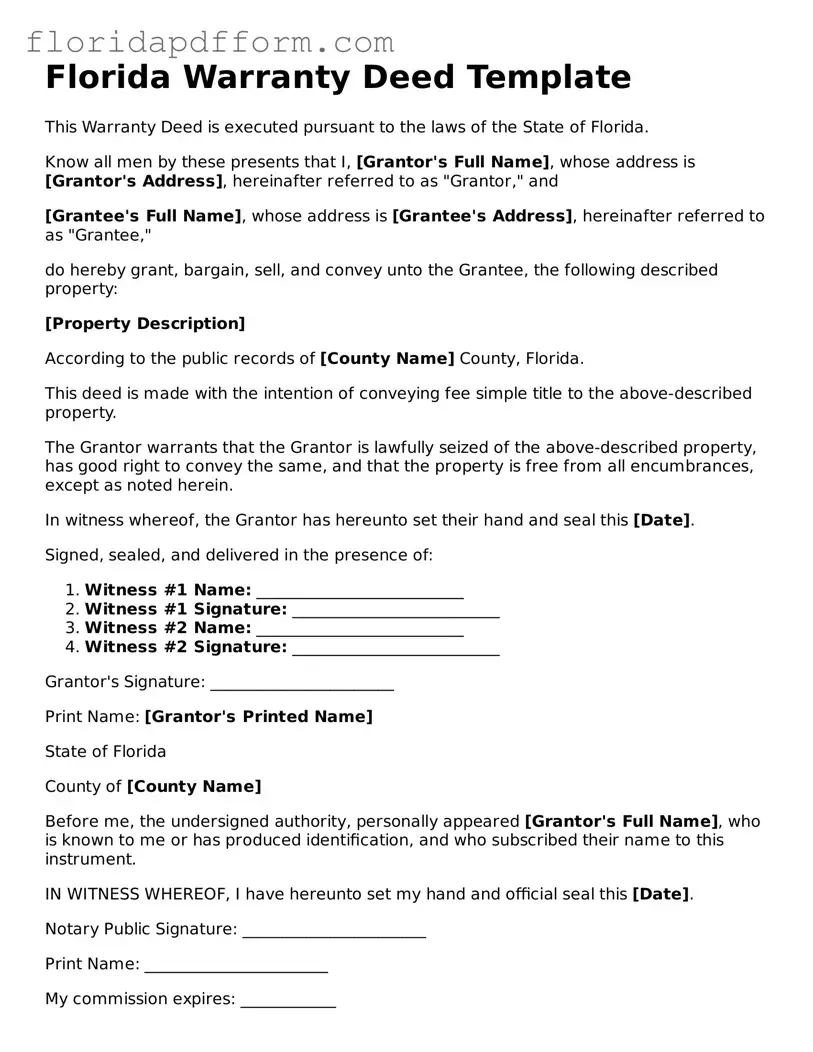Blank Deed Template for Florida
A Florida Deed form is a legal document used to transfer ownership of real estate in the state of Florida. This form outlines the details of the property, the parties involved, and the terms of the transfer. Understanding its components is essential for anyone looking to buy or sell property in Florida.
Launch Editor
